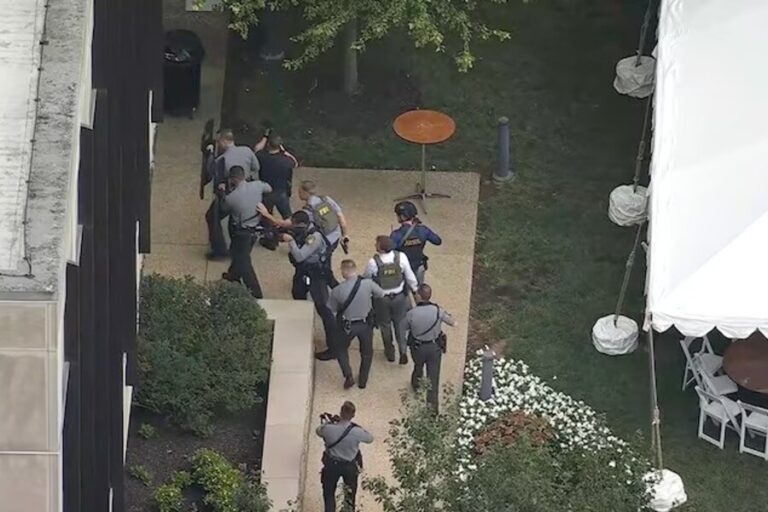Villanova University endured a second false active-shooter report in four days on Sunday, prompting a rapid police response and building searches before authorities confirmed there was no threat. Radnor police said the call came in around 11 a.m. and specifically referenced Austin Hall, a student residence on the suburban Philadelphia campus. At 11:39 a.m., the department announced that law enforcement had determined the report was false and that officers were working to clear the campus and restore normal operations. No injuries were reported.
Sunday’s scare followed a similar hoax on Thursday involving the university’s law school, where an alert about a possible shooter triggered an immediate, large-scale response from local and federal agencies. Officers in tactical gear swept Scarpa Hall as students, faculty, and staff were told to shelter in place. Afterward, Villanova President Rev. Peter Donohue said the timing—coming during orientation events welcoming new students—caused “panic and terror” across the community. “Mercifully, no one was injured, and we now know that it was a cruel hoax—there was no active shooter, no injuries, and no evidence of firearms present on campus,” Donohue said in a message to the university.
Authorities are treating both incidents as swatting—deliberate, deceptive calls intended to provoke an overwhelming law-enforcement response. Delaware County District Attorney Jack Stollsteimer said after Thursday’s incident that his office, in coordination with the FBI, had opened an investigation to identify the caller or callers. There was no immediate update from the DA’s office following Sunday’s hoax, but investigators typically review call metadata, camera footage, and other digital traces to determine origin and whether incidents are linked.
The back-to-back false alarms underscore the disruptive impact swatting can have on a college campus, particularly during the start of the academic year when new students and families are on site and anxiety is high. Even unfounded reports trigger lockdowns, building sweeps, and mass notifications; divert police resources from genuine emergencies; and leave communities rattled. Pennsylvania Gov. Josh Shapiro has emphasized that swatting is illegal and said he directed state police to use “every tool at our disposal” to find and hold accountable those responsible for fake threats.
Thursday’s wave of hoax calls extended beyond Pennsylvania. The University of Tennessee at Chattanooga received a 911 report around 12:30 p.m. the same day claiming an active shooter on campus. State, county, and federal agencies responded, the campus issued “Run. Hide. Fight.” guidance while officers cleared multiple areas, and no evidence of a shooting or injuries was found. That incident, like Villanova’s, remains under investigation by multiple agencies, including the FBI.
At Villanova, police on Sunday moved quickly to verify the Austin Hall report, sweeping affected buildings and coordinating with campus officials to communicate status updates. By late morning, the Radnor Police Department publicly labeled the call a false alarm. University operations resumed once law enforcement completed its checks.
For students and families, officials stress a few core takeaways. First, treat emergency alerts seriously and follow instructions—shelter in place, avoid the affected area, or evacuate—until police declare an all-clear. Second, rely on official channels from the university and local law enforcement for updates rather than social media speculation. And third, seek support if needed; even hoaxes can be distressing, and campuses typically mobilize counseling and student-support services in the aftermath of high-stress events.
What happens next will hinge on the ongoing investigations. If a suspect is identified, prosecutors could pursue state and potentially federal charges, including false reports, terroristic threats, and other offenses tied to the emergency response and campus disruption. Investigators will also evaluate whether Sunday’s dormitory hoax and Thursday’s law-school hoax are connected and whether they fit a broader pattern of swatting aimed at higher-education institutions.
For now, officials say there is no evidence that any firearms were present during either Villanova incident and no indication of an ongoing threat to the campus. Police and university leaders pledged continued coordination to keep the community informed, even as they work to balance caution with calm in the early weeks of the fall term.
